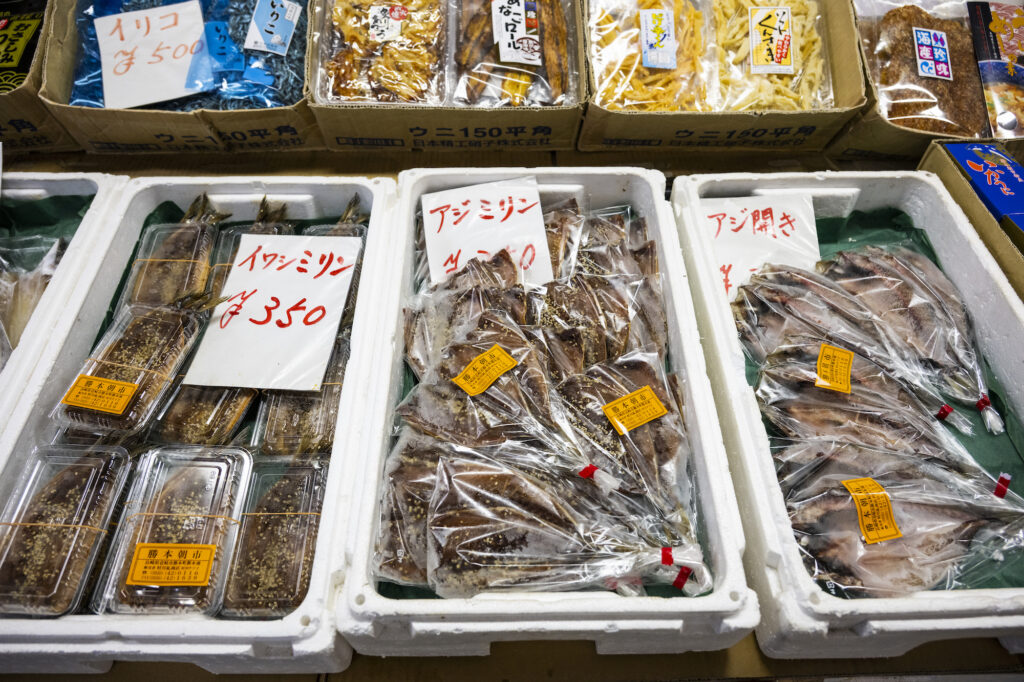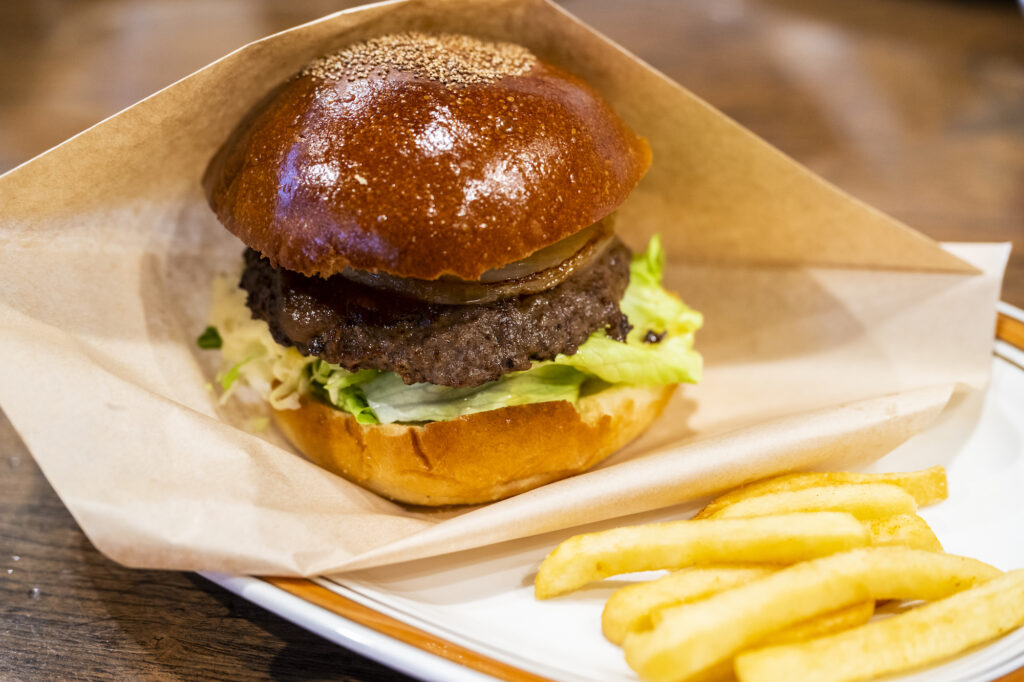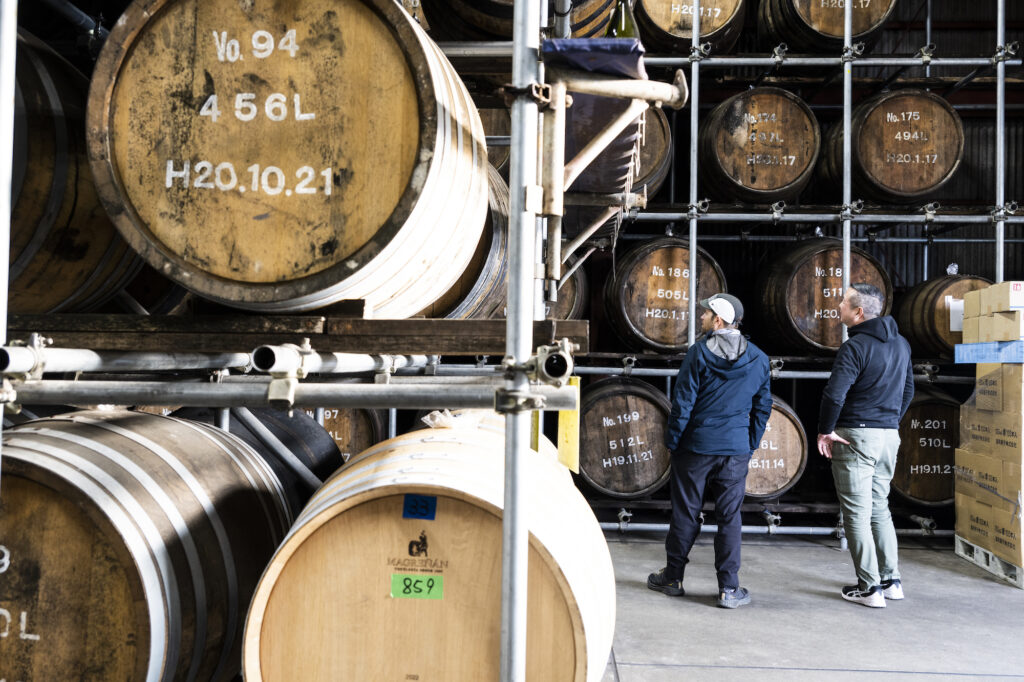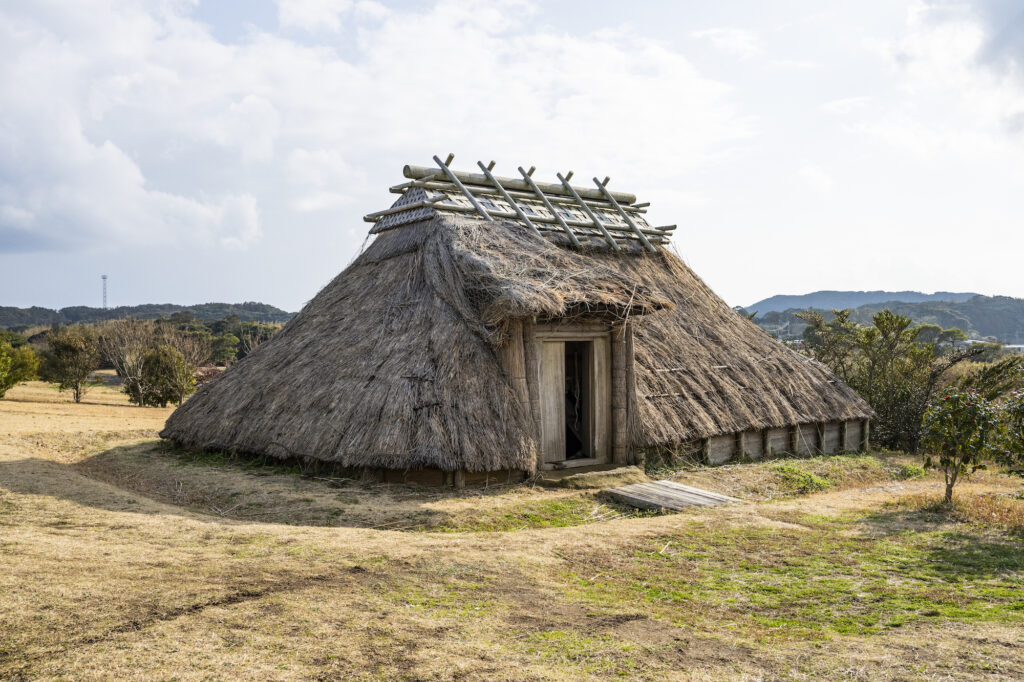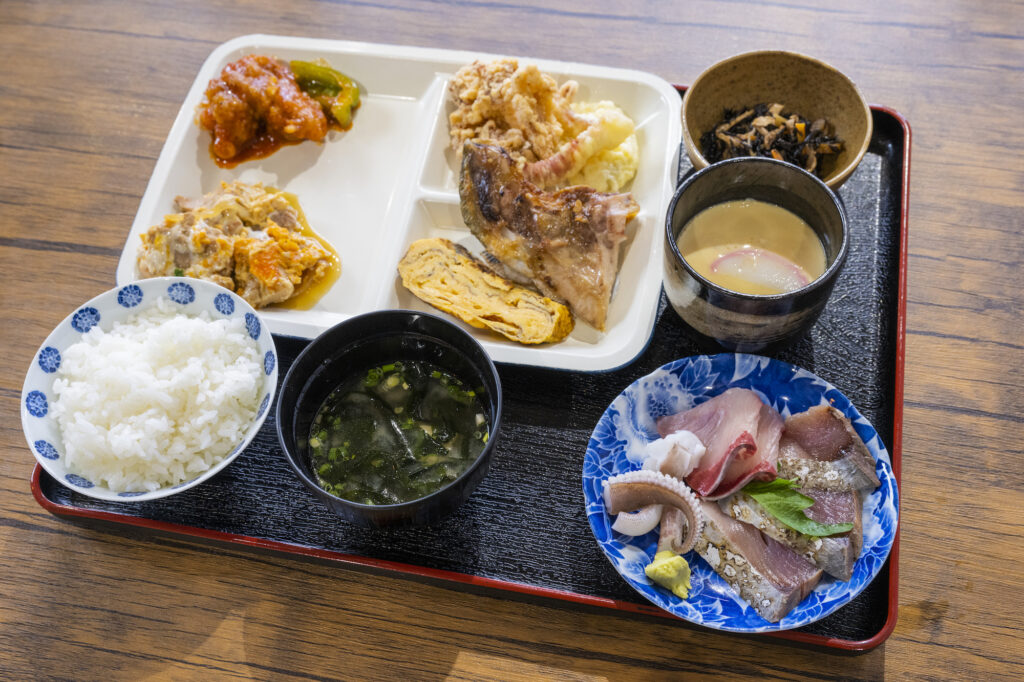A Whole Island of Power Spots
“Fancy biking round the power spots of Iki Island together?” This was the invitation we received from Iki’s cyclists early in the New Year. Perched inbetween Kyushu and Tsushima, Iki is a beautiful island boasting gorgeous natural white sand beaches. The island is also mentioned in the Kojiki (Records of Ancient Matters) and The Wajinden, with more than 150 shrines and more than 280 ancient tombs scattered throughout. With this in mind, we boarded the ferry from Hakata Port and headed out to Iki. For this trip, we decided to take two routes around the island, basing ourselves at “Iki Island Hub,” a coworking space and hotel in Gonoura-cho.
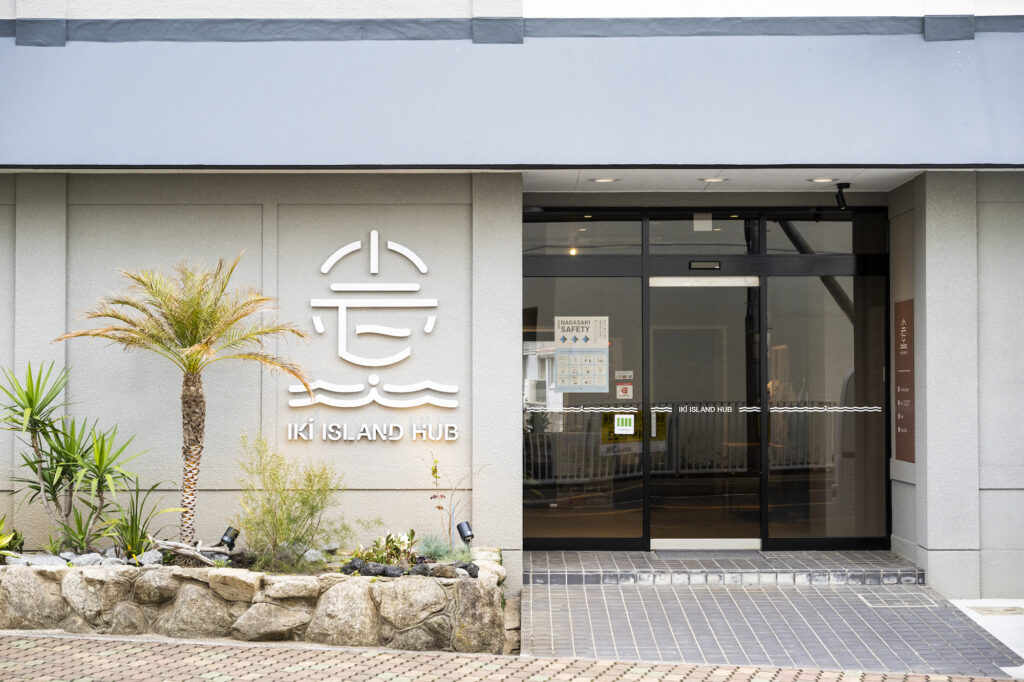
On Day 1, we rented bikes at “Crossport MSZ”, a coworking and mobility rental facility near Gonoura Port, and met up with our navigator Hisayuki Ohgami. Ohgami-san is a member of the island’s cycling team “Isolani Falcone,” and an avid road cyclist who does not miss a single early-morning workout ride. Thanks to him, we could discover the island from a local’s perspective.
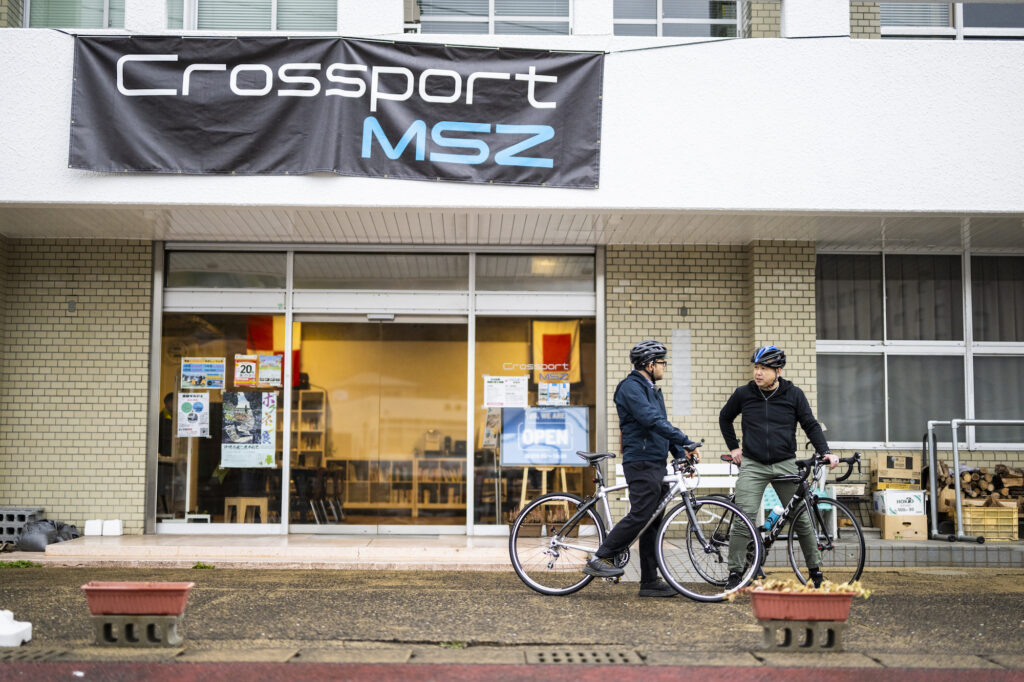
We followed a route on the west side of the island to experience the spectacular scenery, the beauty of the sea, and the interesting topography that only a remote island can offer. In spite of the rain, we took Route 382 from Gonoura Town to Katsumoto, a port town that once prospered from whale fishing. Iki is characterized by its flat terrain, with moderate ups and downs that are neither flat nor steep, making it ideal for bike touring. The national highway running north-south through the center of the island is sheltered from strong gales and allows us to get some distance under our belts.
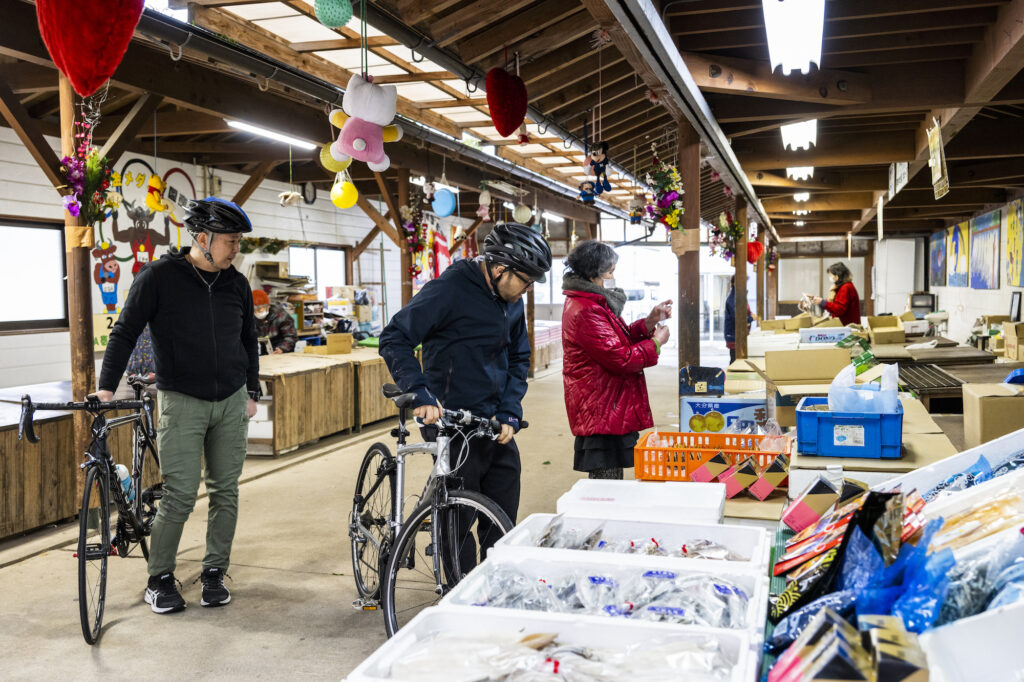
The first destination was the Katsumoto morning market, which was opened in the Edo period when the “whale clan” begun. After chatting with the shopkeepers at the stalls selling dried fish and seafood, we strolled through the town with its old-fashioned fisherman’s vibe. For lunch, we had the famous Iki beef burger at “Mocha Java Cafe Okubo”, which was renovated from a 140-year-old building. “This was my grandmother’s family home, where a seafood wholesale store was operated for a long time under the name “Okubo Honten.” The building, which was designated as a Nagasaki Prefecture scenic asset, was relaunched as a café so that everyone could appreciate it. “Under the motto of “local production for local consumption,” we have a menu that uses a variety of ingredients from the island, including Iki beef,” explains manager Naoko Nomoto.
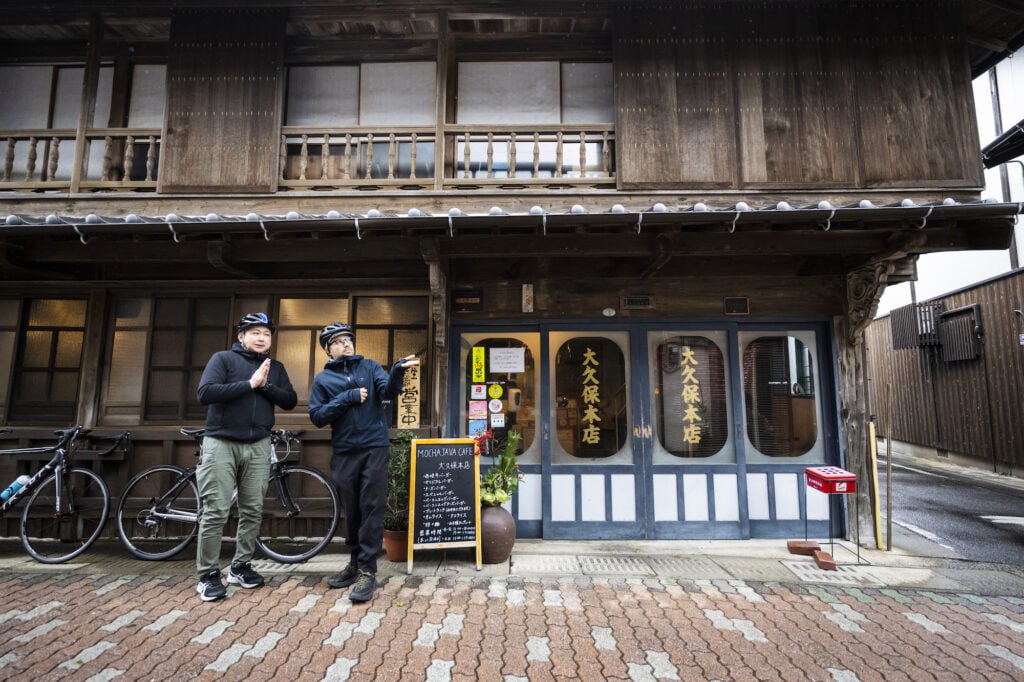
In the afternoon, we headed from Katsumoto Port with its myriad squid fishing boats, to Kushiyama on the north coast. While we had heard that the waves and winds were calm apart from winter, the strong sea breeze made it difficult to move forward. The precipitous cliff that stretches for about 5km is called “Iki’s Cornerstone,” and the stratum at the bottom is said to be about 25 million years old.
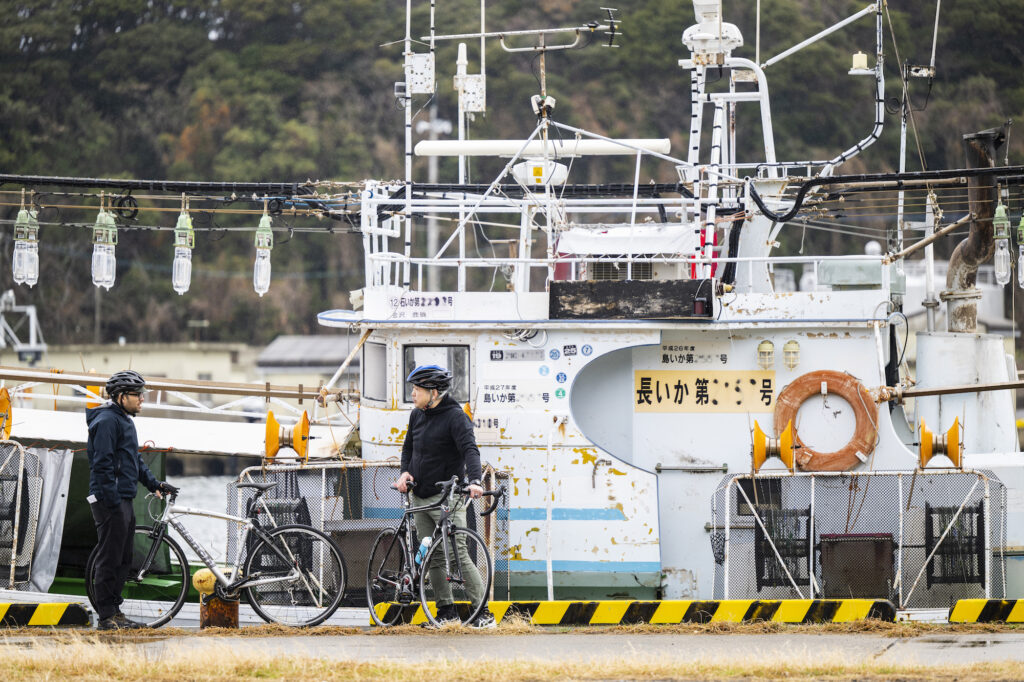
Later, we visited the symbols of the island on the west coast. Monkey Rock, located at the tip of Kurosaki Peninsula, is a huge rock resembling a sideways-facing monkey, and is said to be one of the “eight pillars” designed by the gods to keep the island from drifting away. The large basalt pit with a circumference of 110 meters at Makisaki is said to be the “devil’s footprints,” apparently created by a devil as he stepped on a whale while hunting it. It is said to be derived from the Onigashima legend.

The hitherto untrodden path
On the second day, we toured the north and east sides of the island, visiting ruins and shrines to experience the history that lives on in Iki. From National Route 382 to Prefectural Route 174, we paid a visit to Tsukiyomi-jinja Shrine and proceeded to Kiyoseki Beach, said to be Ogami-san’s favorite. With the white-sand beach in our peripheral vision, the sea breeze propels us forward at a decent pace. After circling around the Yahata Peninsula with a view of the cobalt blue sea, we arrived at Kojima Shrine, the “Mont Saint-Michel of Iki”. Only a few hours before and after low tide, a pathway appears on the beach, allowing visitors to worship.
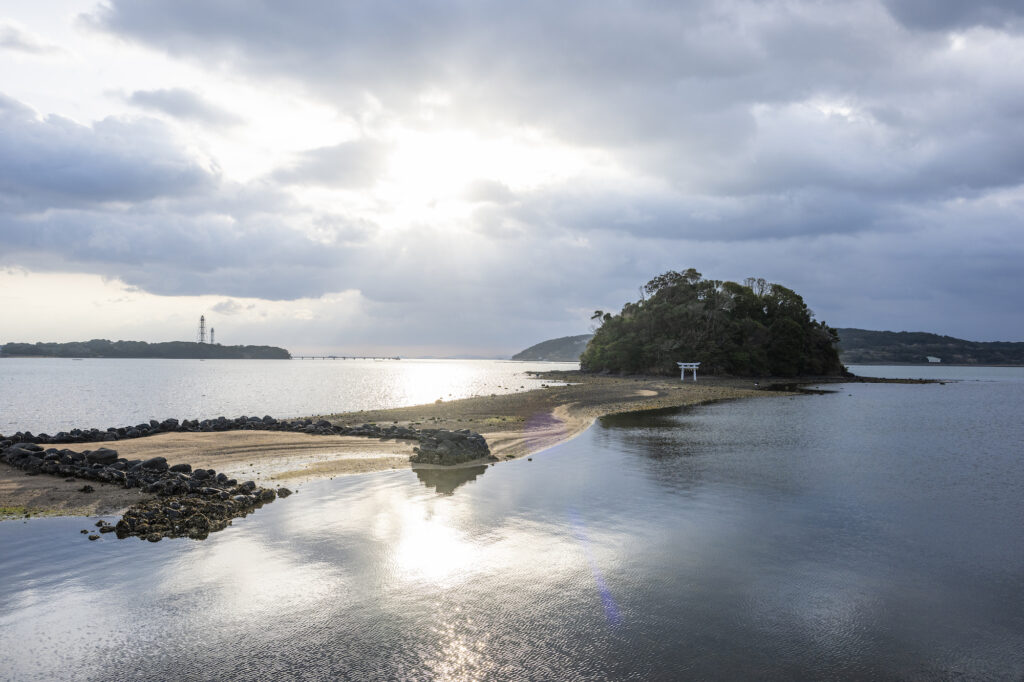
The fun part of riding in Iki is getting off the beaten track. The island is said to have a total of 1,400 km of roads, with prefectural roads running east-west, north-south, and south, intersected by a complex network of small roads and dirt paths. Even local boy Ohgami-san admits to getting lost when he leaves his hometown. So, turn off your map app and follow the paths that lead to who-knows-where. You are sure to discover your own unique scenery, something you won’t find on a custom-made sightseeing tour.
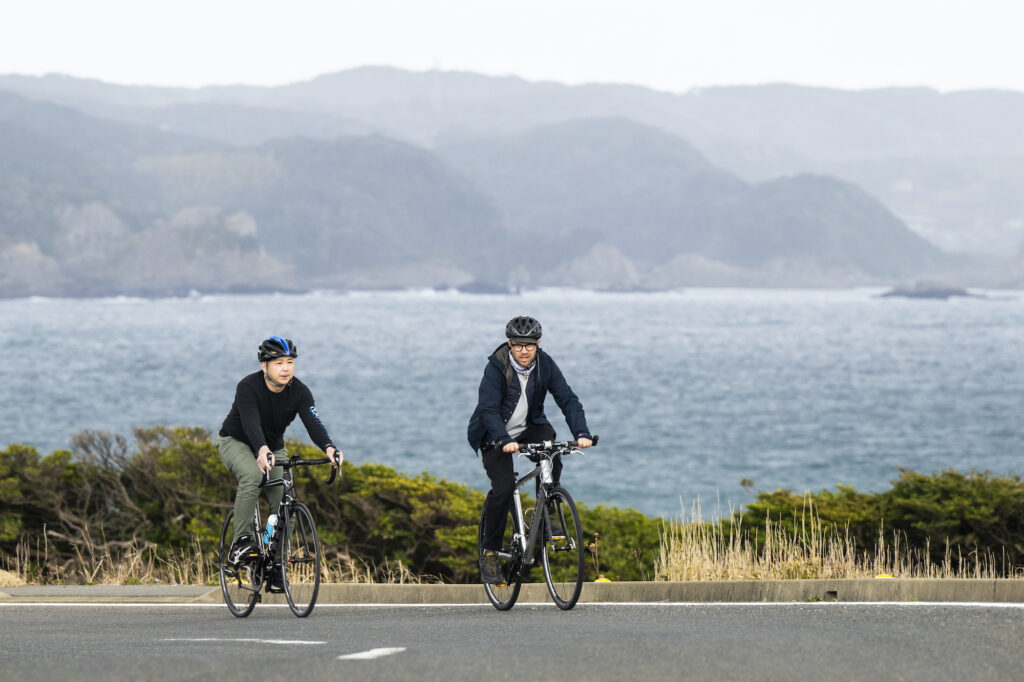
On the way, we called in at the Iki no Kura Brewery. Iki is the birthplace of barley shochu, which goes back 5 centuries. In addition to shochu, the brewery also makes a unique craft gin that contributes to tackling the problem of food loss on the island.
“We started making shochu-based gin in collaboration with ‘Kairi Murakami,’ a hot spring inn located in Yumoto Onsen. Given that 30 tons of asparagus are discarded annually on the island, we decided to use ingredients other than just discarded juniper berries. We use yuzu pulp from the yuzu pepper production process, off-spec strawberries, sea urchin shells, and other ingredients,” explains Fukutaro Ishibashi, representative of Iki no Kura Sake Brewery.
“KAGURA” is a craft gin with a novel hint of strawberries, packed with ingredients from Iki. It is a rare tipple that is hard to find, but if you are lucky enough to see it, you should definitely sample some.
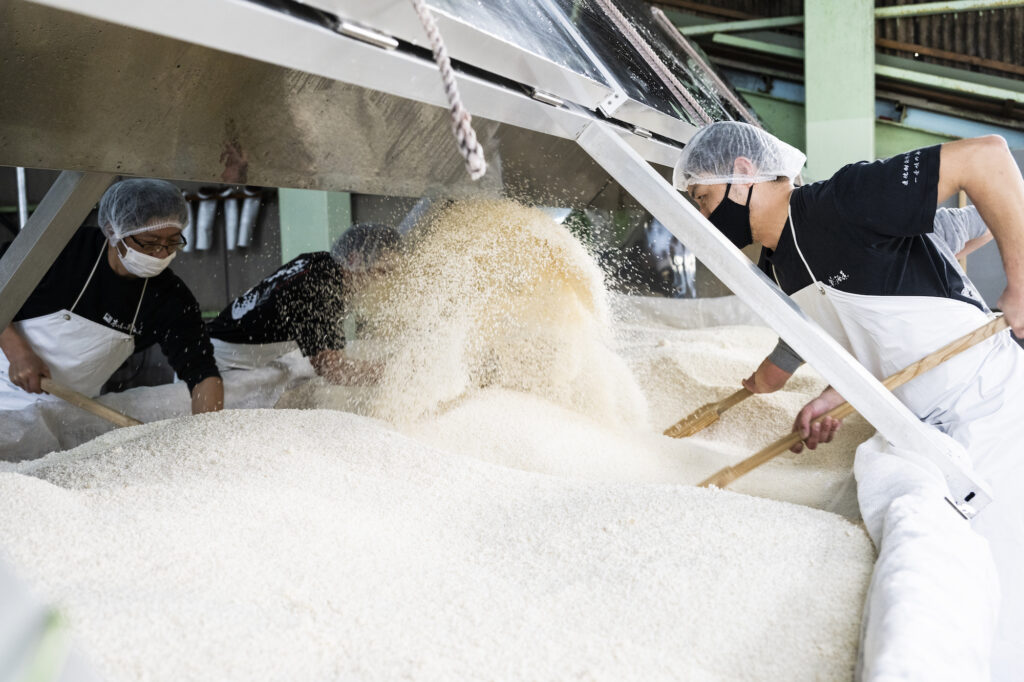
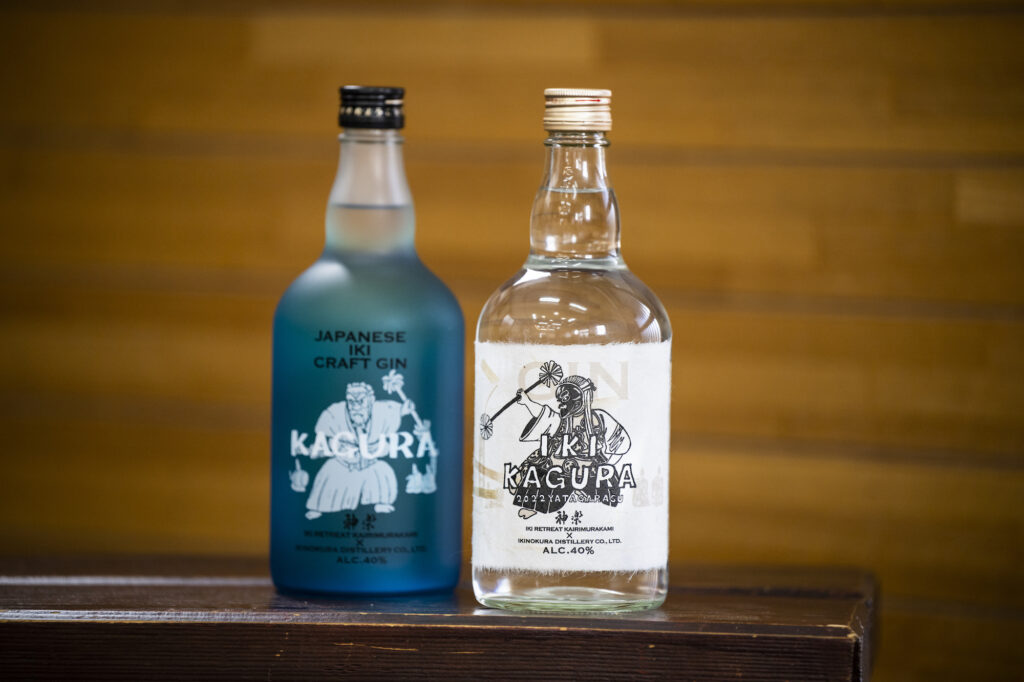
The high point of the two-day ride was the Hara-no-Tsuji ruins, a series of thatched-roof dwellings. In the Fukae Tahara Plain, the second largest plain in Nagasaki Prefecture, the royal capital of “Isshikoku,” flourished from the Yayoi Period to the early Kofun Period. The Hara-no-Tsuji site recreates the moated settlements of that time, which served as a bridge between Japan and the continent. The inhabitants who lived here 2,000 years ago no doubt sought out the divine in the bizarre rocks and spectacular scenery surrounding the island, as well as in the workings of nature.
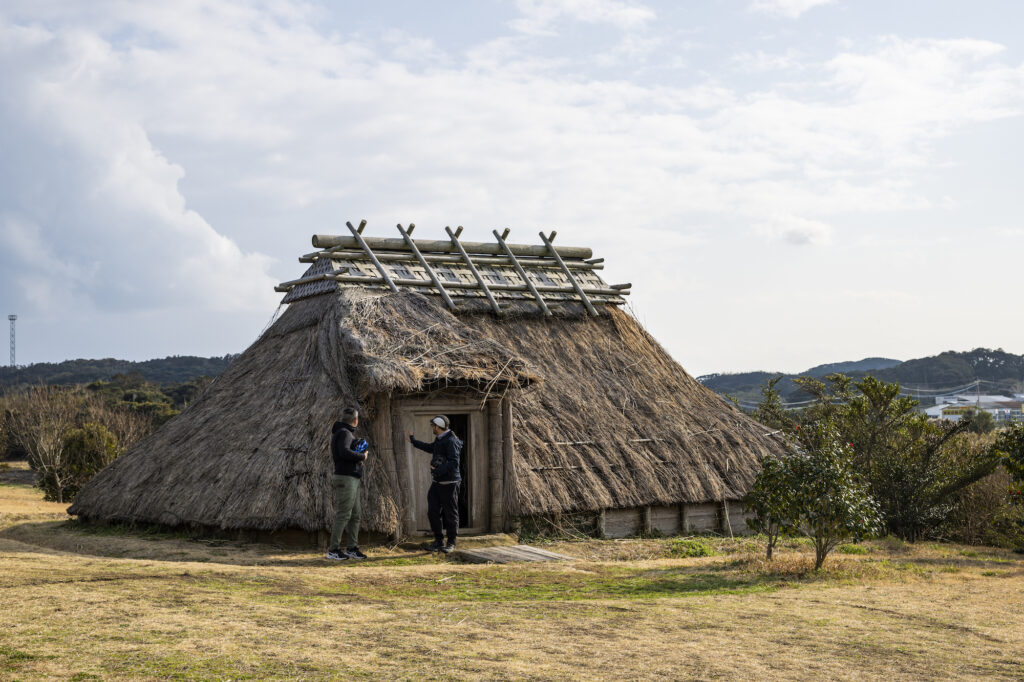
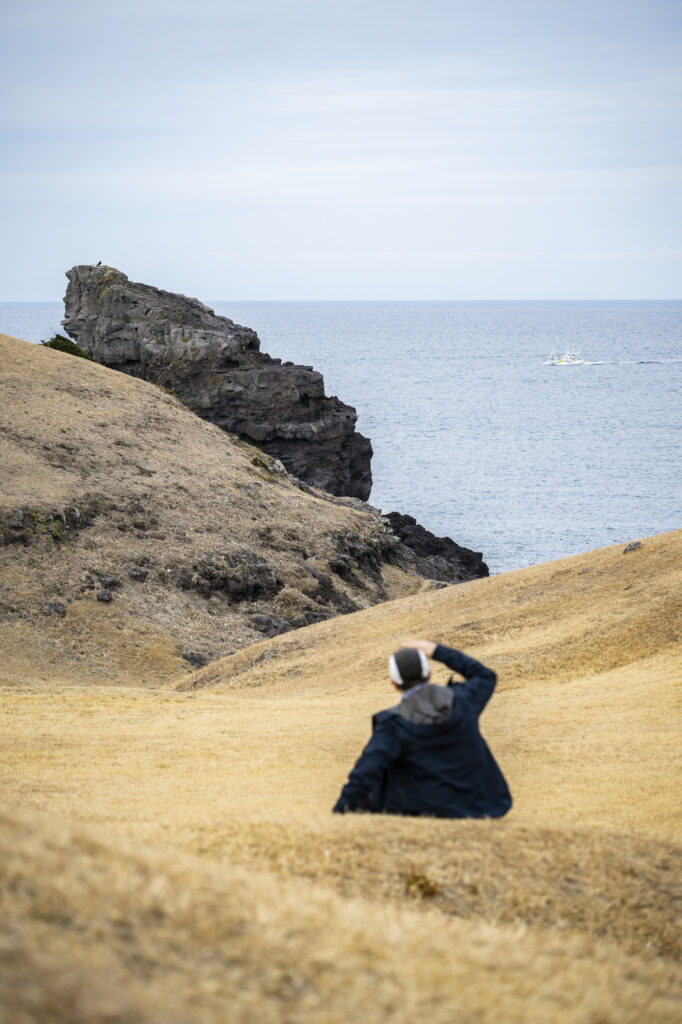
Isolani Falcone
The bicycle team was formed 18 years ago by cyclists living on Iki Island, and our guide Hisayuki Ohgami, is one of the founding members. Currently, there are 7 cyclists ranging in age from their 20s to 60s. As well as participating in road races and cycle events such as the “Iki Cycle Festival”, they are also working to install bike racks here and there to attract more cyclists from outside the island.












